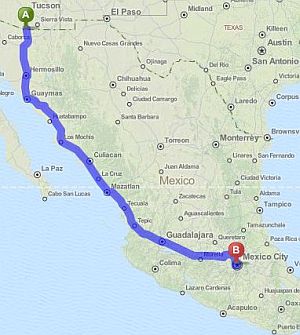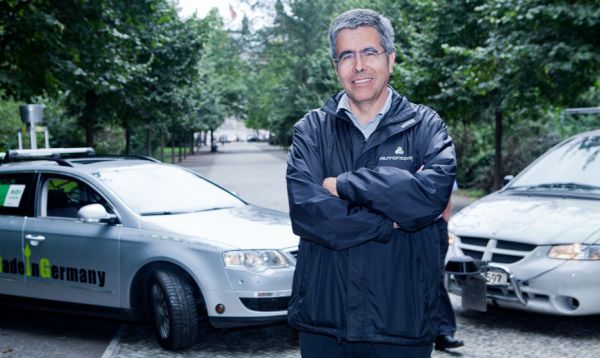Mexico City - A self-driving car created by a Mexican scientist will be tested in October, when it will go on a 2,400 kilometers road trip through Mexico - without a driver.
 |
The scientist said that the importance of this map is to provide more detailed information on the road conditions to the computer installed in the car, which along with its 33 sensors, nine video cameras, nine radars and GPS navigation system, will allow it to drive itself across Mexico. The data collected includes the number and size (width) of traffic lanes, intersections, speed limits, stop signs, traffic lights and speed bumps.
While the prototype was presented in Mexico in 2012, the innovation generated in recent years allows it now to cover much longer distances. "This year, the car was able to cover a distance of 300 kilometers from Berlin to Leipzig (Germany) and back," he said.
For those who prefer to drive manually, Rojas Guzman explained that to start the car, the driver must first determine the destination and enter it into the onboard computer, which serves as a GPS for the driver's convenience.
But when you press the autopilot button, whether driving on the highway or in town, the computer uses the map you have already entered and takes the path it has already calculated to autonomously travel the route, using traffic information provided by the different sensors to regulate speed, identify the need to stop for traffic signals, or when to yield for pedestrians and other vehicles, said the National Polytechnic Institute (IPN) research graduate.
He noted that the major auto makers are working to make self-driving technology available for highway use in high-end cars sold in the United States, Germany and Japan by 2020. The systems won't be ready for city driving until 2040 or 2050, said the scientist.
Although it will take more time before autonomous vehicles are available in Mexico, "we must get a head start so we'll be ready when the technology matures," Rojas said.
Moreover, Rojas González commented that he now seeks to reduce the cost of his prototype since currently cars of this type can cost up to 400,000 Euros, because the sensors are very expensive and are wired manually. "I think that in the future these vehicles may be operated only with video cameras, which are very cheap," he said.
Regarding the usefulness of autonomous vehicles, the researcher noted that the idea is to complement public transportation systems and encourage car pooling, thereby reducing the number of vehicles on the roads, which will make streets safer and improve traffic in big cities.
Rojas has been developing intelligent systems since 1986. His team of soccer robots at Freie University won the World Championship in 2004 and 2005. He is member of the Mexican Academy of Sciences and is the recipient of Berlin’s Technology Prize for 2008. He is also the recipient of the Gold Medal of Science and Technology of Mexico City.
Original article translated and edited by Ricardo Acerco for BanderasNews.com.


